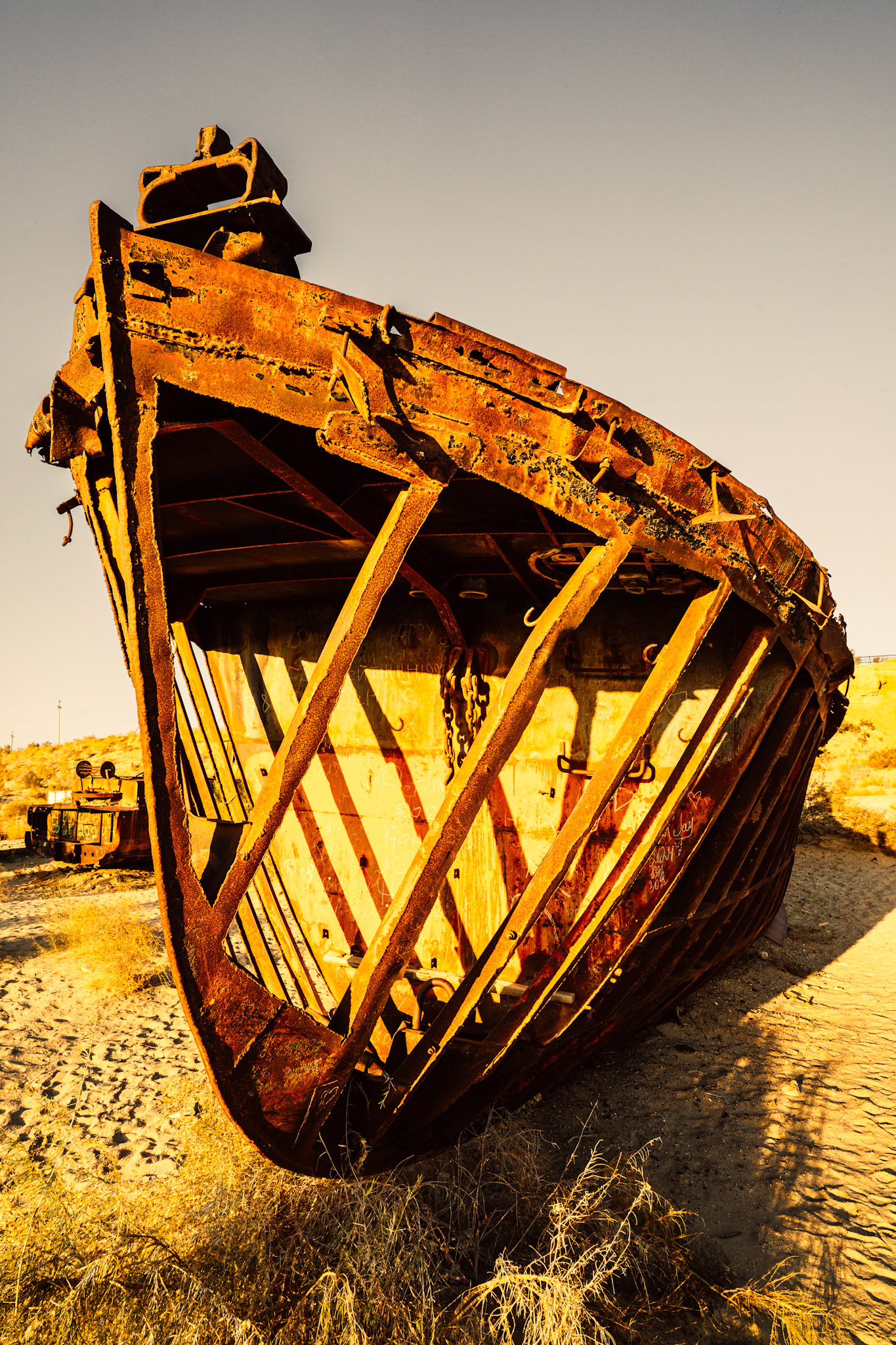Mo'ynoq Ship Cemetery 43°47'30.8"N 59°01'58.6"E
I've tried to find my own way to photograph the wrecks by make frontal portraits at sunrise.





Moʻynoq (Uzbek, in Cyrillic script Мўйноқ; Karakalpak Moynaq or Мойнақ; Russian Муйнак Muinak) is a city in western Uzbekistan in the autonomous republic of Karakalpakstan.
Muynak was once a thriving oasis, where fishing prospered, and the Aral Sea ranked among the largest saltwater lakes in the world. However, since the 1960s, human intervention has drastically altered its fate. Rivers feeding the sea were diverted for large-scale irrigation projects, leaving the Aral Sea to shrink steadily over the decades.
This unsustainable activity led to the sea’s near-complete desiccation, exposing vast stretches of land laden with toxic chemicals and dust. Today, the rusting hulls of abandoned ships serve as haunting landmarks, stark reminders of the catastrophic consequences of human mismanagement.
The once-bustling seaport of Muynak has transformed into a desolate "ship cemetery." Visitors can descend into the ruins and walk along what was once the seabed, now a barren desert marked by the remnants of maritime activity.
It's worth noting that the Aral Sea region continues to grapple with severe environmental challenges, making it a powerful symbol of ecological degradation. Over time, the condition of the ships and the surrounding landscape may evolve. These shipwrecks have become iconic subjects for artistic photography and documentaries, drawing visitors who wish to witness the tangible effects of one of the world's most striking environmental disasters.